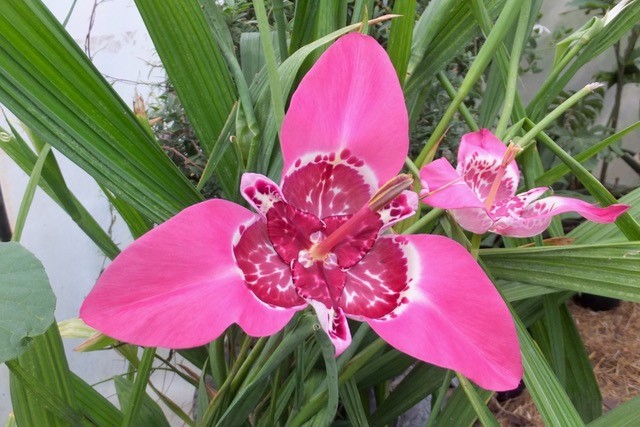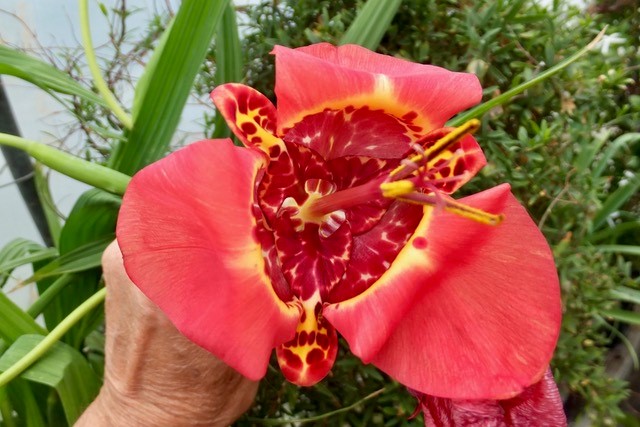
One of the easiest and most exotic of all greenhouse flowers this is sadly not a good choice for those who must work 9-5. You see, or rather you won’t see, the fantastical blooms, which open in the morning and close and die that afternoon, really remarkably soon come and gone. This unfortunate habit is offset by their producing a succession of blooms the next day, and the next and so on for many weeks all depending on conditions and the bulbs’ vigour.
Coming from Mexico and South America the Aztec Tiger flower Tigridia pavonia is a sun loving bulb related to Iris and once eaten as a farinaceous food crop. Inexpensive to buy and easy to grow these at first resemble Gladioli plants with their crimped lanceolate leaves. But then they bloom and their flowers are if anything even more lurid and showy than Gladdies. The huge gaping tri-petalled blooms in orange, red, yellow, purple and carmine with spotted centres are most impressive. And most certainly misnamed, being spotted not striped these really ought to be Leopard not Tiger flowers, but then neither of those was known to the Aztecs, perhaps Ocelot flower would be most appropriate. In other places they’ve acquired other as descriptive names, New Zealanders know them as Jockey Caps.

You can multiply Tigridias by seed or from offsets but as either way they will take a few years to get big enough to bloom so start with some large bulbs initially. Named varieties such as Canariensis are slightly more expensive but give even more markedly coloured flowers.
Pot the bulbs in Spring in tubs of free draining compost, plant quite deep (4in/10cm) for these can be difficult to keep stood up. Indeed as with Freesias their fault is a maniacal tendency to flop just as they mature (canes and strings may be required by those who like everything in order). Personally I quite like the randomness, anyway with their brevity these are little use as cut flowers so straight stems are not much of an advantage anyway.
After flowering finishes in Autumn dry the bulbs off and keep them, in their tubs or out, somewhere dark, dry and frost free till the following spring.
If you become entranced there are about thirty similar species to discover, some of which are small and neat by comparison.


